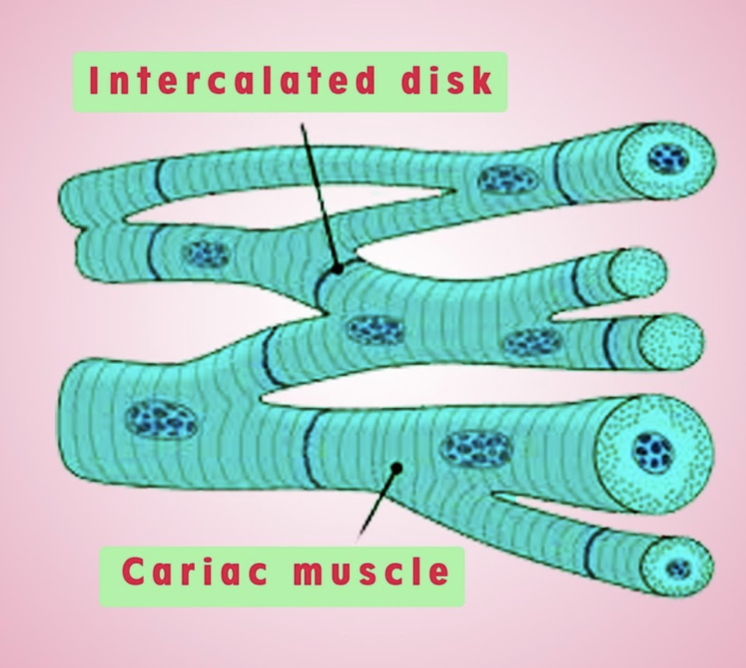
Pumping of the heart is regulated by _________ .
(a) Involuntary muscles
(b) Voluntary muscles
(c) Both voluntary and involuntary muscles
(d) Sometimes voluntary or involuntary muscles
Answer
460.8k+ views
Hint: The heart is the body's pumping organ that pumps blood to every part of the body. A type of muscle that is often referred to as white muscle or smooth muscle controls the pumping of the heart. It is autonomous and not dependent upon our consciousness.
Complete answer:
The human circulatory system consists of vessels in the heart and blood.
The heart is a complex muscle that pumps blood into the circulatory system's three divisions: coronary (the vessels that serve the heart), pulmonary (the heart and lungs), and systemic (the body's systems).
Cardiac muscles are involved in pumping and distributing blood through the heart to all tissues of the body. This process is carried out all the time in the body. It is not governed by the conscious will. These muscles are also called involuntary muscles.

Cardiac muscle tissue functions by involuntary movements to keep the heart beating. This is one characteristic that separates it from the tissue of the skeletal muscle, which you can regulate.
It does this by cells called pacemaker cells, which are specialized cells. These regulate the heart's contractions. Your nervous system sends pacemaker cell signals that cause them to either speed up your heart rate or slow it down.
Additional information: Involuntary muscles are muscles in the human body, also known as white muscles or smooth muscles, the contraction of which is regulated by the autonomic nervous system. Both muscles whose function is autonomous and not impacted by voluntary nerve activity are included in the involuntary muscles.
The muscles that are under conscious control and can be managed at will are voluntary muscles or we can choose when to use them. Since they are attached to the bones, they are also known as skeletal muscles. Voluntary muscles are responsible for the movement and locomotion of body parts.
So, the correct answer is, ‘(a) Involuntary muscles’.
Note: The heart pumps only 4 to 6 liters of blood each minute when a person is at rest. The heart may be expected to pump four to seven times this amount during extreme exercise. Intrinsic cardiac regulation of pumping in response to changes in the amount of blood flowing into the heart and control of the heart rate and strength of cardiac pumping by the autonomic nervous system is the basic means by which the amount pumped by the heart is controlled.
Complete answer:
The human circulatory system consists of vessels in the heart and blood.
The heart is a complex muscle that pumps blood into the circulatory system's three divisions: coronary (the vessels that serve the heart), pulmonary (the heart and lungs), and systemic (the body's systems).
Cardiac muscles are involved in pumping and distributing blood through the heart to all tissues of the body. This process is carried out all the time in the body. It is not governed by the conscious will. These muscles are also called involuntary muscles.

Cardiac muscle tissue functions by involuntary movements to keep the heart beating. This is one characteristic that separates it from the tissue of the skeletal muscle, which you can regulate.
It does this by cells called pacemaker cells, which are specialized cells. These regulate the heart's contractions. Your nervous system sends pacemaker cell signals that cause them to either speed up your heart rate or slow it down.
Additional information: Involuntary muscles are muscles in the human body, also known as white muscles or smooth muscles, the contraction of which is regulated by the autonomic nervous system. Both muscles whose function is autonomous and not impacted by voluntary nerve activity are included in the involuntary muscles.
The muscles that are under conscious control and can be managed at will are voluntary muscles or we can choose when to use them. Since they are attached to the bones, they are also known as skeletal muscles. Voluntary muscles are responsible for the movement and locomotion of body parts.
So, the correct answer is, ‘(a) Involuntary muscles’.
Note: The heart pumps only 4 to 6 liters of blood each minute when a person is at rest. The heart may be expected to pump four to seven times this amount during extreme exercise. Intrinsic cardiac regulation of pumping in response to changes in the amount of blood flowing into the heart and control of the heart rate and strength of cardiac pumping by the autonomic nervous system is the basic means by which the amount pumped by the heart is controlled.
Recently Updated Pages
Master Class 11 Economics: Engaging Questions & Answers for Success

Master Class 11 Business Studies: Engaging Questions & Answers for Success

Master Class 11 Accountancy: Engaging Questions & Answers for Success

The correct geometry and hybridization for XeF4 are class 11 chemistry CBSE

Water softening by Clarks process uses ACalcium bicarbonate class 11 chemistry CBSE

With reference to graphite and diamond which of the class 11 chemistry CBSE

Trending doubts
10 examples of friction in our daily life

One Metric ton is equal to kg A 10000 B 1000 C 100 class 11 physics CBSE

Difference Between Prokaryotic Cells and Eukaryotic Cells

State and prove Bernoullis theorem class 11 physics CBSE

What organs are located on the left side of your body class 11 biology CBSE

How many valence electrons does nitrogen have class 11 chemistry CBSE




